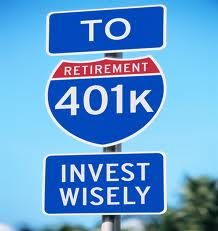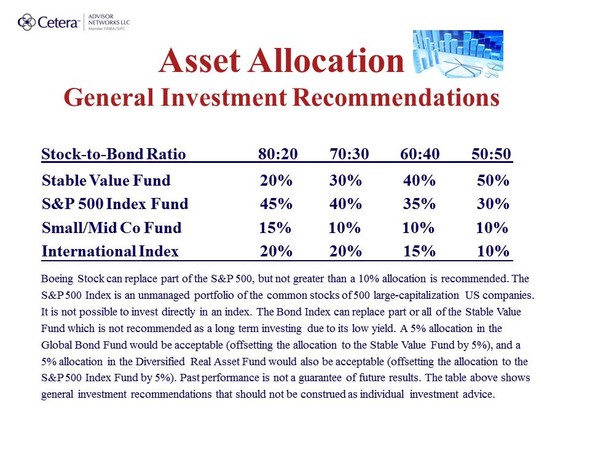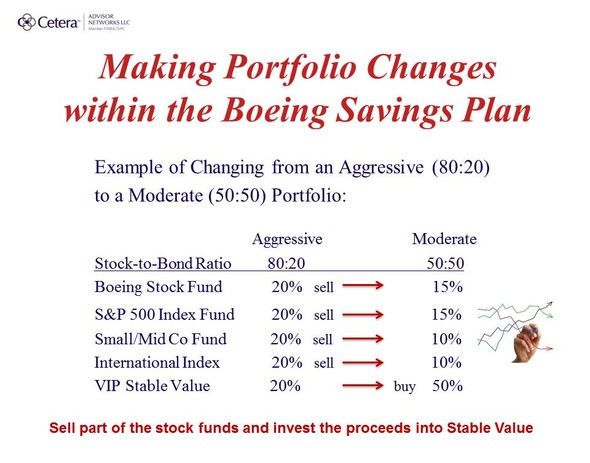Boeing Savings Plan
 Boeing Savings Plan
Boeing Savings Plan
This page presents general information for the Boeing 401(k) Savings Plan. This information should not be construed as individual investment advice. As a former Boeing systems engineer, Dr. Rosenblatt is very familiar with the Boeing Savings Plan and has over 25 years of experience helping employees to better manage their retirement savings.
Contact Edward Rosenblatt at (888) 353-3642 if you have any questions or to setup a complementary portfolio review. He may also be reached at rosenblatte@ceteranetworks.com
Introduction
The following information is written specifically for the Boeing 401(k) Savings Plan, but the general principles may apply to any retirement savings plan. Of course, individual financial situations and risk tolerances may differ widely, so I highly advise contacting me directly regarding your individual situation if you have any questions. I cannot make individual recommendations before knowing your specific financial situation.

Invest the Most You Can
First of all, you should be contributing at least 8% of your salary to the Boeing 401(k) Savings Plan on a pre-tax basis. Boeing will match 75 cents for each dollar contributed up to 8%, so this essentially results in an immediate 75% gain on your contributions. Nowhere else will you get such a tremendous gain guaranteed to you. If your budget allows, contribute more than 8%.
The Stock-to-Bond Ratio
Secondly, you must decide on the appropriate stock-to-bond ratio. The stock-to-bond ratio is perhaps the single most important factor that determines the long term rate of return and the volatility of your portfolio. This ratio is simply the percentage of stock funds compared with the percentage of bond funds in your portfolio. For example, a 50:50 stock-to-bond ratio means 50% stock and 50% bonds.
There are only three bond funds available in the Boeing Savings Plan: the VIP Stable Value Fund, the Bond Market Index, and the Global Bond Fund. All of the other funds are either pure stock funds or a combination of stock and bonds. Some of the pure stock funds include: S&P 500, Russell 2000, Mid Company Fund, Small Company Fund, and of course the Boeing Stock Fund.

A higher stock-to-bond ratio, or in other words the more invested in stock funds relative to bond funds, the higher the potential rate of return that might be achieved in the long term, accompanied however by more volatility and risk. Conversely, a lower ratio, or less invested in stock funds relative to bond funds, will probably result in a lower return rate with less volatility over the long term. Of course, past performance is not a guarantee of future results.
Shown below are some examples of basic portfolios with different stock-to-bond ratios. Also, shown is an example of how to change a portfolio from aggressive to moderate within the Boeing Savings Plan using Boeing Total Access on-line or by speaking with a Total Access agent.
Note that advisory services are available from Boeing for the Boeing 401(k) Savings Plan. However, after setting up an initial portfolio, this service will merely periodically rebalance the funds and not actively manage your investments. In other words, if the market suddenly encounters a crisis and begins to drop sharply, this service will not automatically make any changes to your portfolio.











